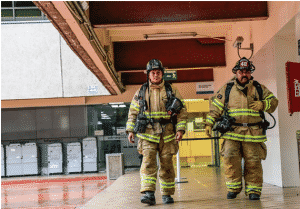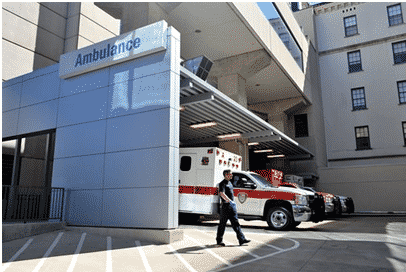A vital service feature that saves lives
In 2018 Canadians made 12 million calls to 911. Increasingly more of those calls for emergency help are made over IP networks. The same mobility and portability conveniences we expect and enjoy now present unique challenges for the IP PBX service providers and users. While selecting and implementing on-premises equipment or a cloud partner for VoIP services the business leaders and homeowners need to be aware of the mandatory requirements and some common pitfalls.
At the beginning (about1968) the FCC and American Telephone and Telegraph Company (A&T) established a shortcut method to contact and request emergency services with the dialed digits of 9-1-1. This now mandatory telephone feature has spread across Canada and is expanding nearly worldwide.
It has no doubt saved countless lives, lessened the impact of injuries, and helped to report and solve crimes in an expeditious manner. Previously each household and business need to identify and post local emergency numbers of fire, ambulance, poison control, and police services separately near physical telephones. Failing that step of posting the user was fumbling through a local phone book and/or placed a panic call to an operator, often with mixed results.
As adoption of 911 on VoIP was an afterthought by the PBX manufacturers and service providers with some fatal and near-fatal consequences. Government standard-setting and regulations have paved a path away from most risks. The educated VoIP administrator very much needs to be informed of these issues and limitations. They have a role in assuming responsibility for loved ones and colleagues.
Today Enhanced 911 (E911) is currently deployed in most metropolitan areas in the United States, Canada, and Mexico. Initially, Phase 1 was mandated by the FCC for the location services of mobile cellular telephones and address accuracy challenges. Since 2005 VoIP Services was added to E911 Phase II thus clarifying roles and responsibilities as well as enforcing provider compliance for the transfer of auto-populated of location data on fixed and nomadic VoIP endpoints.
What happens when you call 911?
From your IP Phone, a 911 call can be placed via your LAN, PBX, and internet. A trained emergency response operator will verify your information and determine via scripts if the dispatch of emergency services is warranted. They may provide situational coaching in real-time until first responders arrive on site to take over. Detailed call data and voice recordings are retained for some time for review in further legal investigations, capacity planning, and quality training purposes.
What are the common VoIP 911 Limitations?
On a traditional analog local line, your 911 call is sent directly to the nearest emergency response center. Conversely, on a VoIP service, the 911 call is forwarded to a 3rd party service provider (a Public Safety Answering Point (PSAP)) that will automatically or manually route your call to a local emergency response center based on some minimum required location criteria.
This critical step is known to be the cause of call routing mistakes to the wrong center if there is an information flaw, misconfigured IP_PBX, or missing contact information. You may be asked to manually provide key information (name and location etc) during the distress call in order to send the proper resources. If the emergency caller is unable to speak, this situation is exacerbated.
The root causes of such incidents may pertain to the VoIP administrator’s attention to a documentation responsibility or some compatibility between the VoIP equipment and the PSAP to make pertinent info readily visible. The general responsibilities of the service provider and subscriber are outlined below.
Another common limitation of calling 911 from a VoIP home or a business phone is power failures. This common occurrence will prevent your desk telephone and/or LAN from completing the 911 call through to the internet. Traditional landline phones typically do not have this issue as protected power is sent via the local loop from the Telephone Company’s station. Note that wireless phone extensions within your house will have the same dependency on household electricity. For this reason, some remote locations retain 1 local line although VoIP and cell phones may be within the household.
Other less common system failures are the loss of hosting services at the cloud provider, IP network congestion, IP PBX misconfiguration, and the overwhelming call spikes at the emergency centers when hundreds of individuals may call in for the same major event.
North American Guidance and Standards
The U.S. Federal Communications Commission (FCC) in the United States and the Canadian Radio-television and Telecommunications Commission (CRTC) in Canada have been leading their respective initiatives but also collaborate on standards-setting for VoIP PBX manufacturers and service providers. As our voice and data communications have always been interconnected there is cooperation and the lessons learned are often shared. 911 and VoIP regulations are documented in the USA by the FCC Consumer Guide for VoIP 911. From the CRTC the VoIP 911 call interaction between providers and consumers is documented here Obligations of Local VoIP Providers. For your, convenience GoneVoIP has distilled these government links below.
What are the VoIP Provider’s 9-1-1 related Responsibilities?
- Always provide a Basic or Enhanced 911 service attached with a VoIP service
- Provide subscribers written notice of any 911 service limitation(s) at the time of:
- Sharing marketing materials
- Terms of Service documentation
- Initial signup
- Installation –> onboarding
- Provide a public website stating current limitations
- Provide the subscriber with an online tool to verify & update location information
- Register with CRTC as a reseller if applicable
- Register with CRTC as a Competitive Local Exchange Reseller (CLEC) if applicable
- Obtain and keep current a Basic International Telecommunications Services (BITS) license from CRTC if carrying international traffic
- Provide the CRTC with a detailed plan and timetable for 911 service creation, if required
- Stay informed of Telecom Decisions that affect 911 services and next-generation 9-1-1 directions.
What are the VoIP end-user 9-1-1 related responsibilities?
- Acknowledge the provider’s limitations during the sign-up process
- Keep your civic address, contact names, and email contacts current in the VoIP Provider’s 911 database. This should be done at initiation and could be verified via a ‘911 test call’ (see below)
- Should you move your home or business, the database must be updated by the subscriber
- Still, be prepared to give your name and exact location during a 911 call
- Be prepared for service interruptions on LANs, WANs, and local utilities
- Keep your billing account in good standing to avoid services suspension
- Make family, babysitters & workplace emergency leader(s) aware of your known VoIP and 911 limitations with suggested workarounds like a designated person(s) to access 911 over cellular voice.
Action Items – Get Ready, Stay Ready, and Stay Safe!
Some key takeaways are listed based on the history of limitations and learnings
- Review the documentation of perspective VoIP providers before signature. Ensure they have invested in user tools to handle your organization’s profile.
- After the initial setup of your VoIP system, you need to update the provider’s database with your civic address, key email addresses, and phone numbers
- Remember the remote offices, home offices and road warriors that go through your IP PBX will require the same documentation for emergency purposes
- Identify individuals in your organization to ‘own’ the 911 process and database hygiene.
- Visit your VoIP and 911 risk & readiness after a major system move, add or change
- Consider redundant paths and multiple internet providers for VoIP traffic as well as UPS for LANs if your tolerance for VoIP 911 service interruptions is low
- Consider performing a periodic 911 test call* to verify the function and accuracy
911 Test Calls
To arrange a test of 911 on a VoIP line and verify full functionality, you may contact your local police for a scheduled appointment. For example in the Metro Toronto area, first, review the material at Toronto Police and make an appointment with at least 5 days advanced notice. To schedule a Toronto 911 Test Call dial 416-808-8899.
VoIP and 9-1-1 Evolution
As the 911 over VoIP limitations are overcome, the harnessing of innovative technology will make our future safer and at times of personal injury, crime, or public disasters. Next Generation 9-1-1 (NG9-1-1) is a series of initiatives to update and drive improvements of the 911 infrastructure in the United States and Canada. Eventually, it will enable the public to transmit text, images, video, and data from an IP device to the PSAP. Next-generation systems will include sensors like personal medical devices and even monitor hazardous waste being transported on rail systems. NG9-1-1 has also brought outbound emergency alerts to your wireless devices and highway signage systems.
GoneVoIP will stay on top of these issues, limitations, and directions as it may shape your investment decisions in Business IP Telephone services and in your home communications.


